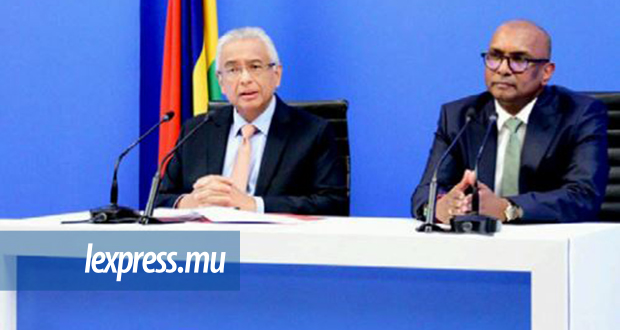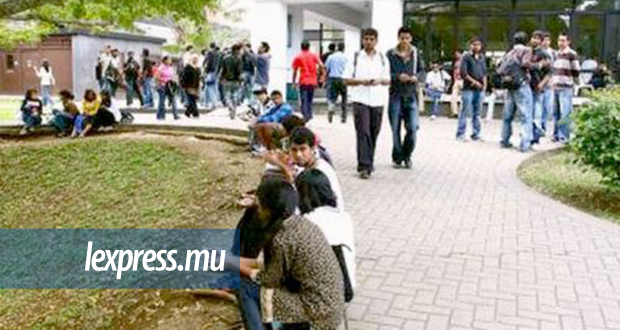Publicité
Budget 2023-2024: why the Rs 20,000 to 18-year-olds is not the winning formula it looks like
Par
Partager cet article
Budget 2023-2024: why the Rs 20,000 to 18-year-olds is not the winning formula it looks like

In the 2023-2024 budget the government has come up with a new idea: paying Rs 20,000 to each person turning 18. Here is why this one-off payment is not enough to correct the generational bias towards the old in current Mauritian politics and why it is not the electorally winning ticket it seems.
How new is this promise?
In the recent 2023-2024 budget finance minister Renganaden Padayachy came up with a new proposal; “to mark the 55th year of independence of our country, we are introducing the Independence scheme. As from 1st of January 2023, each and every one reaching 18 years will be provided with a grant of Rs20,000”.
For economist Vinay Ancharaz, “it is clear that this is intended as an electoral bribe, a purely populist measure. They know they have the backing of the elderly through pension populism, so now they are trying to woo the young”. This is not the first time in recent years that a proposal geared towards the young has been made; during the 2019 election, the opposition party MMM promised if brought to power it would come up with a plan to pay Rs 5,000 a month to unemployed young people aged between 18 and 25. “Compared to the current proposal in the budget, the MMM proposal would have been better from the recipient’s point of view, but would have proved to be more expensive from the point of view of the budget” says economist Pierre Dinan. If adopted, the MMM plan would have netted a total of Rs 480,000 into the pockets of each individual over the lifetime of the programme, as compared to the one-off Rs20,000 grant promised in the current budget. “ What the MMM was proposing would have been better because unemployment benefits is something that exists in many countries, there is a sound logic to that. You cannot compare the two, one is an unemployment benefit where youth unemployment is hovering over 20 per cent while the other is just a populist one-off measure” argues Ancharaz, “this is something totally new”.

The economic logic
The Rs 20,000 grant pledged by the government to everybody turning 18 was explained by Padayachy in the budget to allow for things like, “going to university, getting a job or placement, starting a small business, learning how to drive, buying new sports equipment. These are all genuine aspirations of an 18-year old as he reaches adulthood”.
But what kind of economic result is actually likely to result from this promise? “First of all this should not have been an unconditional grant, there should have been some kind of means-testing” says economist Eric Ng, “secondly it should have been earmarked for a specific purpose such as say giving a culture pass of that value that could be used to go to the cinema, arts exhibitions, buying books or going to events by Mauritian artists”. Just giving Rs 20,000 in hand, he adds, would, in most cases be spent quickly on things like smartphones. “It’s a very short-term measure that will just allow for a brief spurt of consumption”. Dinan argues that instead of a one-off cash grant it should have gone into something like a savings account opened for the young. Ancharaz estimates that the Rs300 million that the measure will cost each year, “could have been invested elsewhere, why give away so much money that very few will use judiciously?”
The fear that such an unconditional cash grant would end up being frittered away in consumer spending is something that has been borne out by experiences elsewhere too. In a 2017 study the World Bank concluded that such unconditional one-off cash handouts to the young “failed to translate into increased welfare in the longer-run…the idea that they can contribute to a sustained improvement in welfare over the longer-run is not supported in our data”. If the economic premise of simply handing out Rs 20,000 is unlikely to translate into any real long-term economic benefit, the real problem Ancharaz points out is that such policies are hard to roll back even when there is no real economic logic to them; “by introducing such a programme, this would also end up binding future governments as well since it would be politically suicidal to do away with such popular measures. Once set, such programmes are here to stay”.

Is this a generational rebalancing?
One argument that can be made is that by introducing a measure specifically for the young – even if limited to those turning 18 – the budget at least is attempting to offer something for younger Mauritians who have been studiously ignored by political parties since at least 2005.
The reason for this bias towards the old is demographics; the combined effect of plunging birth rates and extended lifespans – the average Mauritian man who lived until 61 years in the 1970s, now lives up to 71 years – has delivered a greying Mauritian population. If the elderly totalled 37,600 in 1962, they were 99,300 by the middle of 1997. If in 1962 pensioners made up just five percent of the total Mauritian population, it is now over 20 per cent and projected to keep growing to over 30 per cent by 2050. This lesson was hammered home to Mauritian politicians after 2004. Back then, reacting to warnings from the International Monetary Fund and the World Bank that the universal state pension – the Basic Retirement Pension (BRP) – was becoming unsustainable that could see the government going from spending two per cent of GDP to six per cent of GDP on it, the MMM-MSM government in December 2004 decided to introduce a means-test for the BRP for the first time 1957 when means testing for the pension was abolished by the British colonial administration.
Under the new system, anybody getting more than Rs 23,000 from other sources of income after retirement would not qualify for the BRP anymore. The result was a political disaster: only 4,000 out of 110,000 BRP beneficiaries at the time were found to no longer qualify for the BRP while at the same time handing ammunition to the Labour-PMXD bloc to dislodge it from power in the 2005 elections. The means-testing experiment hardly lasted six months before it was abolished. The new team in power too learned from the experience and refused to touch the BRP: in 2008 it did not implement an earlier pledge to raise the retirement age for the BRP from 60 to 65 years or indexing raises in the BRP to inflation. Then during the 2014 election, the pension became a significant political weapon: a pledge to raise the BRP to Rs 5,000 being seen as helping deliver an MSM-ML victory against the Labour-MMM combine. Since then all parties have ignored their own previous rhetoric of the unsustainability of the BRP and have turned elections into bidding wars, with each party promising hikes to the BRP. At the last election, the MSM promised to bring it up eventually to Rs 13,500 (or eight per cent of GDP according to an IMF warning in 2021), while Labour promised to increase it to Rs10,000 and the MMM promised to effectively raise it to Rs 9,000.
Younger Mauritians, expected to finance such grandiose promises, were largely ignored. So is this current promise of giving out Rs 20,000 to everyone turning 18 correcting that generational bias of contemporary politics? “ This is not a rebalancing since its coming as part of a budget that’s giving out money to everybody” says Ng, “the pension too has been increased (to 11,000, on the way to the eventual target of Rs 13,500 by the end of the government’s current mandate -ed.). The question is how to pay for the pension when it reaches Rs 13,500? Right now the government is just taking money out of the CSG fund to give out allowances, they will eventually have to take the money from the consolidated fund. At the moment, the pension is on par with the minimum wage, but will end up surpassing it. You don’t see the economically inactive out earning the economically active anywhere else in the world, usually the global benchmark is for pensions to be 60 per cent of the minimum wage”.
How electorally significant is this promise?
The promise to pay Rs 20,000 to each Mauritian turning 18, Dinan says, “is one that is electorally very clever, the old age pension is supposed to attract the crowd of old people while this one is intended to attract the young”. He adds, “this is also a response to something that everybody is now beginning to see, which is that young people are leaving the country”.
Historically, emigration rates have fluctuated. According to official statistics, it peaked in peaked in periods of great political tension or economic distress: around 1968 period, and faced with the political and communal uncertainties surrounding independence an average of 2,000 Mauritians left the country each year, before reducing to an average of 700 Mauritians emigrating annually in the 1970s. Then in the late 1970s and early 1980s – associated with a period of economic distress and high unemployment – emigration once again rose to an average of 2,000 people leaving the country annually before once again coming down to an annual average of 800 by the 1990s. Today, Statistics Mauritius estimates that over recent years, an annual average of 1,850 primarily young Mauritians are leaving the country. Not only are there fewer younger Mauritians being born to keep the economy (and the pension system) humming, but those young Mauritians that we do have are leaving the country at a rate that’s historically been associated with periods of political or economic crisis.
If demographics dictate the bias of contemporary politics towards the elderly, it also dictates the limits of how effective an electoral tool simply handing out cash to the young can be. For example, in 2023 only an estimated 14,000 Mauritians will be turning 18. That’s just over 1 per cent of the total voting population. With a similar number qualifying for the cash grant the following year. Over time, this tactic will only yield diminishing returns and the electoral benefits will only shrink further: in 2031 only 12,371 people will turn 18,11,781 in 2036 and 11,337 in 2041. While handing out cash to the young may sound like a winning move right now, its unlikely to change the increasing electoral arithmetic skewed towards the elderly, and is actually going to become less and less effective as time goes by.
Publicité
Publicité
Les plus récents






